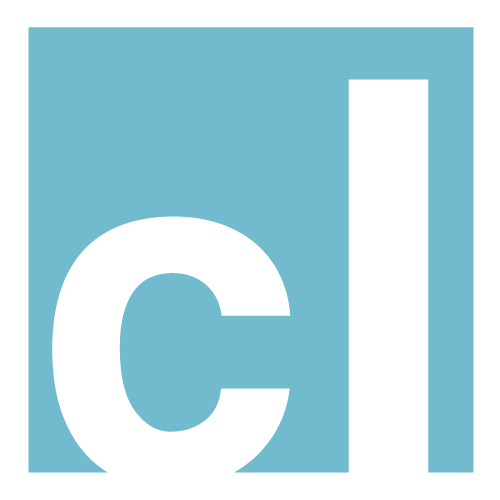Introduction to Mastering Trans-Disciplinary Communication
Building Trans-Disciplinary communication skills is essential for addressing complex, vexing challenges. One should engage in specialized education, hands-on collaborations, and diverse research ventures to foster these competencies. In order to master Trans-Disciplinary Communication (TDC), it’s crucial to understand and respect varied terminologies and cultural nuances, actively listen to diverse perspectives, and adapt flexibly. Continuous learning via readings, workshops, and feedback, coupled with networking, regular reflection, and valuing all contributions, will enhance these skills. Embracing digital tools, promoting cultural sensitivity, and ensuring clarity in communication are key components of this holistic approach to Trans-Disciplinary Communication (TDC).
Trans-Disciplinary Communication Skills
Building TDC skills is crucial for navigating complex problems that span multiple disciplines. These skills allow researchers and professionals to collaborate and synthesize knowledge from different fields. Developing these skills requires a comprehensive approach that encourages a blend of theoretical knowledge, practical experience, and a culture of collaboration. Here’s a guide to fostering these competencies:
- Case Studies & Field Work: Engage students in real-world projects where they must work with stakeholders from diverse sectors, helping them practice their communication skills in tangible settings.
- Conflict Resolution Skills: Differences in perspectives can lead to disagreements. Develop skills to navigate and mediate conflicts to find common ground.
- Cultural Awareness: Every discipline has its own «culture» or way of doing things. Understand and respect the methodologies, priorities, and values of other disciplines. This is particularly important in international collaborations where linguistic and cultural differences can add another layer of complexity.
- Cultural Sensitivity & Awareness: Include modules in the curriculum that promote understanding and respect for different academic, national, and regional cultures. Emphasize the value of diverse perspectives in problem-solving.
- Digital Competency: Ensure students are well-versed in using digital collaboration tools, as these platforms are often the backbone of interdisciplinary collaborations.
- Diverse Research Collaborations: Encourage students and faculty to participate in research projects that involve multiple departments or institutions. Collaborations with international institutions can also enhance cross-cultural communication skills.
- Education & Training: Enroll in interdisciplinary and transdisciplinary programs or courses. Universities often offer such courses or even degrees, especially in fields like environmental science, global health, and sustainability. Attend workshops, seminars, or webinars focusing on interdisciplinary research methods.
- Engage in Diverse Collaborations: Collaborate with experts from different disciplines on projects. This firsthand experience will expose you to the challenges and benefits of interdisciplinary work. If you’re in academia, consider co-advising students with a colleague from another department or discipline.
- Engage in Team Projects: Encourage collaborative projects involving students from diverse disciplines. This exposes students to different methodologies, terminologies, and perspectives. Provide structured guidance on collaborating effectively, setting shared goals, and navigating conflicts.
- Feedback Mechanisms: After interdisciplinary engagements, solicit feedback to understand what worked and what didn’t. This helps in refining the communication process. Peer review and mentorship from senior interdisciplinary researchers can provide valuable insights.
- Flexibility and Adaptability: Be prepared to revise or even abandon your initial hypotheses or approaches based on input from collaborators. Recognize that other disciplines might have valuable approaches to a problem that you haven’t considered.
- Interdisciplinary Coursework: Universities should integrate courses that bridge different disciplines, allowing students to work on projects requiring diverse expertise. Case studies, which are inherently interdisciplinary, can be integrated into the curriculum to provide real-world examples.
- Language & Terminology: Facilitate sessions that focus on understanding jargon from different disciplines, fostering a shared vocabulary. Promote the use of plain language, which makes communication clearer and more accessible.
- Networking: Join interdisciplinary organizations or associations. They provide platforms for collaboration, networking, and shared learning. Attend conferences that have a broad, interdisciplinary scope.
- Networking Opportunities: Organize interdisciplinary conferences, seminars, and webinars where students and faculty can engage with peers from various fields. These platforms can expose participants to new approaches, fostering a culture of continuous learning.
- Practice Active Listening: Engage with colleagues from other disciplines without preconceived notions. Listen to understand their perspective and vocabulary. Ask clarifying questions to ensure you understand the concepts they’re presenting.
- Provide Resources: Offer access to literature, case studies, and articles that highlight the benefits and challenges of interdisciplinary and transdisciplinary collaborations. Encourage reflective practices on these readings.
- Reading Widely: Read literature from other disciplines. It will familiarize you with different perspectives and the language and methodologies of those fields.
- Regular Reflection: Reflect on what’s working and what isn’t in your interdisciplinary collaborations. Adjust strategies as needed.
- Seek Feedback: After collaborative meetings or discussions, ask for feedback. How clear was your explanation? Did you adequately address concerns from other disciplines?
- Value Every Contribution: Recognize the importance of each discipline’s contribution. Everyone brings a unique perspective to the table; valuing these perspectives fosters better communication.
- Workshops & Training: Offer workshops that focus on interdisciplinary collaboration, effective communication, conflict resolution, and the importance of shared vocabulary. Incorporate role-playing scenarios that mimic real-world interdisciplinary challenges.
Building TDC skills is an ongoing process. It involves self-awareness, respect for other disciplines, and a commitment to continuous learning and collaboration.
Intercultural Understanding in Collaboration
In our increasingly globalized world, disciplinary collaborations benefit immensely from understanding diverse cultural backgrounds. Beyond mastering different fields of study, it’s crucial to grasp the subtleties of language, societal norms, and cultural contexts each participant brings. By emphasizing empathetic listening, building cultural competency, leveraging the richness of diversity, encouraging open dialogues, and recognizing cultural nuances, such collaborations can transcend academic boundaries, fostering innovations and providing a holistic insight into the multifaceted global landscape. The complexities of interdisciplinary and transdisciplinary communication aren’t just bound to understanding multiple fields of study but also the varied cultural backgrounds each participant brings to the table. The nuances of language, societal norms, and even the cultural significance attached to certain topics can play a pivotal role in shaping these collaborations.
- Active Listening with Empathy: Listening becomes even more crucial in intercultural interdisciplinary communication. It’s about understanding the words and the cultural undertones accompanying them. Empathetic listening, where one strives to understand the spoken words, emotions, and cultural contexts behind them, can bridge many gaps.
- Building Cultural Competency: Invest time in learning about the cultures of your collaborators. This doesn’t just mean the obvious aspects like language or customs but delves into the nuances of how they approach problems, hierarchy, collaboration, and even conflict. This competency will allow for richer, more profound communication and understanding.
- Leveraging Diversity: The diverse backgrounds of the collaborators shouldn’t be seen as a challenge but as an asset. Different cultures approach problems in unique ways, offering fresh perspectives that can be invaluable in interdisciplinary endeavors. The amalgamation of these diverse thought processes can lead to innovative solutions that might not have been possible within a singular cultural context.
- Open Dialogues: Encourage open conversations about cultural differences. Addressing them head-on, rather than tiptoeing around them, can lead to enlightening discussions that broaden everyone’s horizons. It’s an opportunity for learning and growth for all parties involved.
- Recognizing Cultural Nuances: Beyond just the context of the problem and the academic goals, it’s vital to appreciate the cultural backdrop from which each participant is coming. Certain terminologies, methodologies, or even ways of presentation that may be commonplace in one culture might not resonate the same way in another. It’s essential to be sensitive to these nuances to avoid unintentional misunderstandings.
Incorporating an intercultural worldview into TDC doesn’t just make these collaborations smoother but also more enriching. It’s a journey of learning that transcends academic knowledge, providing participants with a holistic understanding of the world and the multifaceted ways in which it operates.
Mastering the Language for Trans-Disciplinary Communication
The varied languages, terminologies, and concepts across disciplines and sectors often present a challenge in TDC endeavors, “there is no Esperanto for TDC”. To bridge this divide, it’s pivotal to familiarize oneself with the linguistic nuances of collaborating parties. Leveraging glossaries, dictionaries, and online platforms can facilitate this learning. Additionally, proactive measures like asking questions, seeking clarifications, and using illustrative examples ensure clear, aligned communication among participants.
Refining Performance for Varied Audiences: An Actor’s Insight
Just as actors on a stage tailor their performances to captivate diverse audiences, professionals in interdisciplinary and transdisciplinary fields face the challenge of adapting their communication styles. The world of theatre offers valuable lessons here. An actor must read the room, understand the audience’s expectations, and modulate their performance accordingly. Similarly, one must consider complex fields’ audience, medium, and objectives to convey information effectively. Analytical tools like audience analysis, genre analysis, and rhetorical analysis are akin to an actor’s rehearsal techniques, helping fine-tune one’s approach. Beyond analysis, strategies such as simplification, summarization, visualization, and storytelling – all deeply rooted in theatrical performances – can be employed to enhance clarity and engagement. Thus, much like a successful actor, a good communicator must be versatile, adaptive, and deeply attuned to the nuances of their audience.
Building Trust and Rapport in Trans-Disciplinary Research: A Director’s Perspective on Facilitating Innovation
For a Director of Research, collaborating with faculty members across diverse departments, and fostering Multi-Disciplinary (MD), Inter-Disciplinary (ID) and Trans-Disciplinary (TD) collaborations is essential. The bedrock of these collaborations is trust and rapport, which allow for seamless sharing of ideas, data, and insights. This foundation of mutual respect and understanding promotes the exchange of diverse perspectives and drives our common goal of advancing research and innovation. As leaders, it’s imperative to display attributes like respect, empathy, and openness, recognizing and valuing the myriad contributions. Active listening, delivering constructive feedback, and expressing genuine appreciation are methods to strengthen these ties. Beyond the confines of structured meetings, informal interactions – be it through social media, online forums, or casual discussions – play a significant role in sustaining and deepening these interdisciplinary relationships, ultimately paving the way for a more cohesive and innovative research environment.
Reflecting and Evaluating in Collaboration: Continuous Growth in Communication
Effective TDC is not merely a one-time accomplishment but an evolving journey of enhancement and evolution. Elevating the quality of such interactions necessitates regular reflection and evaluation. This process not only allows for learning from previous experiences but also aids in identifying both strengths and potential areas for improvement. Tools such as self-assessments, peer reviews, and surveys are instrumental in offering a comprehensive assessment of communication efficacy. Moreover, the application of structured frameworks, including SWOT analysis, setting SMART goals, and formulating actionable plans, facilitates methodical progress tracking in communication endeavors. This commitment to introspection and evaluation anchors sustainable growth, adaptability, and communication excellence as we navigate the intricate terrains of collaborative research and projects. If you’re keen on delving deeper into the intricacies of collaborative convergence, consider reading my book, «Reflections on Communication, Collaboration, and Convergence: Strategic Models for STEM Education and Research» by Lipuma, J., Yáñez León, C. E., & Guzmán Zarate, V. H. (2023), published by Mito (Lipuma et al., 2023).
Additional readings
Convergence: Facilitating Transdisciplinary Integration of Life Sciences, Physical Sciences, Engineering, and Beyond (National Academy of Sciences, 2014)
Cultures and Organizations: Software of the Mind (Hofstede et al., 2010)
Transdisciplinarity: Joint Problem Solving among Science, Technology, and Society (Klein et al., 2001)
Sources and affiliated links
Hofstede, G., Jan Hofstede, G., & Minkov, M. (2010). Cultures and Organizations: Software of the Mind (Third Edition). [Affiliated link]
Klein, J. T., Häberli, R., Scholz, R. W., Grossenbacher-Mansuy, W., Bill, A., & Welti, M. (Eds.). (2001). Transdisciplinarity: Joint Problem Solving among Science, Technology, and Society. Birkhäuser Basel. https://doi.org/10.1007/978-3-0348-8419-8
Lipuma, J., Yáñez León, C. E., & Guzmán Zarate, V. H. (2023). Reflections on Communication, Collaboration, and Convergence: Strategic Models for STEM Education and Research (1st ed.). Mito. [Free download]
National Academy of Sciences. (2014). Convergence: Facilitating Transdisciplinary Integration of Life Sciences, Physical Sciences, Engineering, and Beyond. The National Academy Press. https://doi.org/10.17226/18722


1 comment on “Mastering Trans-Disciplinary Communication: A Comprehensive Guide to Collaboration”
Comments are closed.